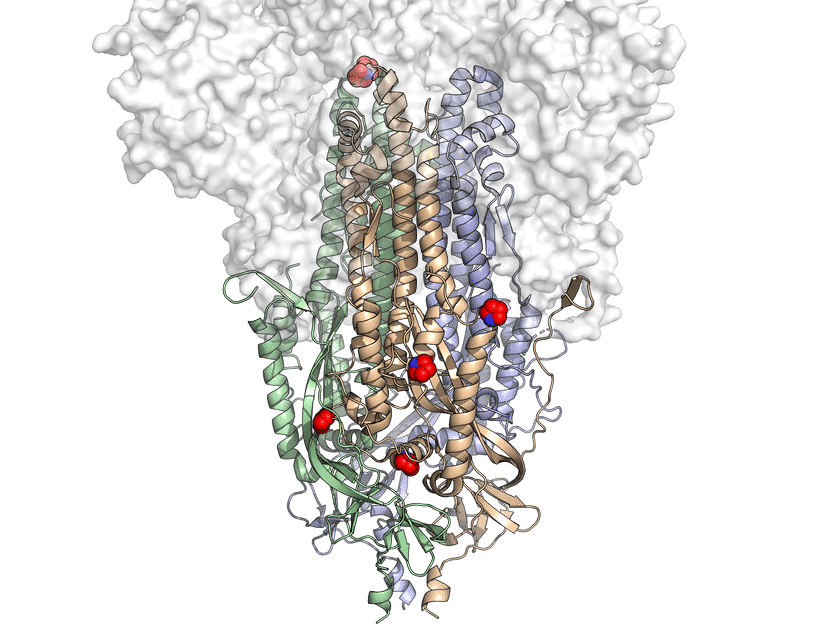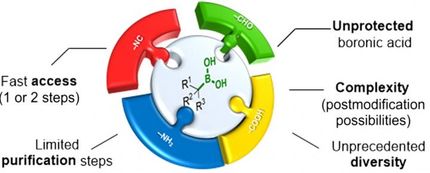New contrast agents for magnetic resonance imaging of tumors
magnetic resonance imaging (MRI) is primarily a medical imaging technique that is used to visualize different soft tissues within the body. In the field of cancer therapy, a contrast agent is often used to help identify the exact location of tumor cells. As reported in the European Journal of organic chemistry, a team led by Carlos Platas-Iglesias and Teresa Rodríguez-Blas from the Universidade da Coruña has recently designed a new set of receptors that may be useful in the design of specific MRI contrast agents for the recognition of certain compounds on the surfaces of tumor cells.
Specific contrast agents that are able to report on their biological environments through molecular recognition processes are highly desired. A specific MRI contrast agent could take advantage of these processes to respond to certain functional groups that can be found in abundance in the diseased tissue. Sialic acid, for instance, is considered to be a tumor marker, because it is known to be over-expressed on the surfaces of tumor cells. An MRI contrast agent specific for sialic acid should bind selectively with the acid in preference to other sugar residues and to saccharides such as glucose and fructose, which occur in relatively high concentrations in the blood.
Platas-Iglesias and Rodríguez-Blas reasoned that a suitable receptor for sialic acid recognition might be based on (thio)urea units containing boronic acid functions, as both of these functionalities show promise as recognition moieties. (Thio)Urea-based receptors can establish strong interactions with anions such as carboxylates, which are present in sialic acids, and boronic acids are able to form reversible complexes with 1,2- and 1,3-diol units present in saccharides.
To test their receptors, the authors monitored their binding to Neu5Ac, which is the most common member of the sialic acid family; it also plays an important role in cellular recognition processes. The receptors were found to bind to Neu5Ac, and importantly, much weaker interaction between the receptors and other saccharides studied was observed. The selectivity was found to occur by cooperative two-site binding of Neu5Ac through (1) interaction at the boronic acid function of the receptor and (2) interaction between the thiourea moiety and the carboxylate group of Neu5Ac. The set of receptors have thus been shown to interact selectively with targets over-expressed on the surface of cancer cells, which makes them promising synthons for the design of specific contrast agents for MRI of tumors.
Original publication: Carlos Platas-Iglesias et al.; "Towards Selective Recognition of Sialic Acid Through Simultaneous Binding to Its cis-Diol and Carboxylate Functions"; European Journal of Organic Chemistry 2010.
Topics
Organizations
Other news from the department science

Get the life science industry in your inbox
By submitting this form you agree that LUMITOS AG will send you the newsletter(s) selected above by email. Your data will not be passed on to third parties. Your data will be stored and processed in accordance with our data protection regulations. LUMITOS may contact you by email for the purpose of advertising or market and opinion surveys. You can revoke your consent at any time without giving reasons to LUMITOS AG, Ernst-Augustin-Str. 2, 12489 Berlin, Germany or by e-mail at revoke@lumitos.com with effect for the future. In addition, each email contains a link to unsubscribe from the corresponding newsletter.
More news from our other portals
Last viewed contents
List_of_primula_diseases
Animal testing methods for endocrine disruptors should change, team argues - Review suggests that oral gavage, the accepted method of dosing lab animals to test chemical toxicity, does not accurately mimic how humans are exposed to chemicals in everyday life

COVID-19 vaccine innovation could dramatically speed up worldwide production - Scientific team has successfully redesigned a key protein from the coronavirus



















































